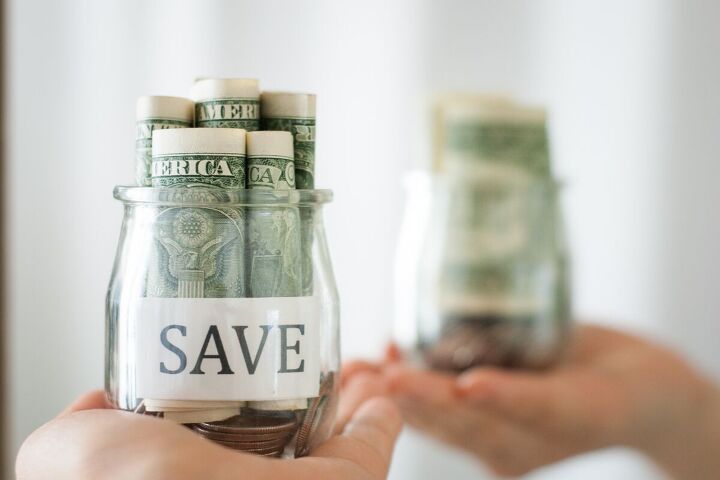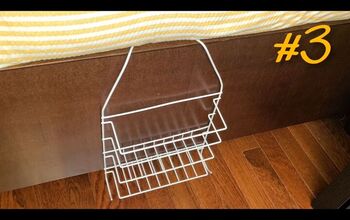7 Strategic Savings Habits To Help Your Build an Emergency Fund

I'll be talking about how I went from not having any savings to having $6,000 in savings last year, thanks to developing savings habits. I've grown from that point, but learning to save money was a huge accomplishment for me as a single mom on a moderate income.
I had never saved more than $1,000, so $6,000 is quite a lot to me. The savings I'm referring to are the $6,000 in my emergency fund. If you aren't aware, an emergency fund is a savings account only used for certain things. It's a saving for job loss, a major medical emergency, emergency travel, a car, or a major car repair.
Let's get into what I did to save money to accomplish my savings goal.
1. Save extra paychecks
Tip number one is if you're paid bi-weekly or weekly, you will have months where you have extra checks or extra pay periods. If you can, pretend that that month's other pay period doesn't exist. Try to save as much of that as you possibly can.
A good rule of thumb is that I typically like to save anytime I get money like that. Any money outside my normal biweekly paycheck, I will try to keep 5% for myself, and everything else goes into the emergency fund.
2. Save any unexpected money
My next suggestion is to save any bonus money, like your tax return. Any unexpected money should be going towards your savings. I got some back child support I wasn't expecting last year, and in 2020, I got a stimulus check—all this unexpected money I did not spend.
3. Save referral bonuses
My next suggestion is one of my favorite ways because it's one of the ways that people overlook extra money in their daily lives.
I've got cash for referring people to the apartment complex I lived in. I've got cash for switching from one mobile carrier to another. All these rebates you're getting for a referral are a gold mine to put into your savings. I just moved all my money for things like that into savings.
This also includes cash back. Cash back is just such a regular part of my everyday life. I'm the person that will, for the most part, pay my credit cards off every single month. So if you are like that, you earn cash back that isn't eaten up by interest.
Groceries, gas, booking, travel, my insurance, and my cell phone are all on my credit card. I pay them off monthly but earn money on those transactions every time. It's easy to make extra money and move that cash into your savings account.
4. Participate in challenges
There are some smaller things you can do too. One of the things I find fun to do is to participate in challenges. I've done challenges on Instagram, and other Instagrammers in the debt-free community are also doing challenges.
For example, one of them is to use only cash to pay for your gasoline. If you break a $20 bill and get a five back and a ten, you will keep the five in a separate savings envelope. Put the savings into your account monthly.
Another challenge that's done very frequently online is the no-spend challenge. This is where people see how long they can go without spending extra money. If you are a person that can quickly get into spending as I can, then these no spend challenges may be a way for you to go.
Go on Instagram, put in the hashtag $5 challenge, dollar bill challenge, or no spend challenge. You will usually come up with many different Instagrammers doing these sorts of challenges.
5. Stay out of stores
Another quick tip for you is to stay out of stores. The fewer times I can go into a store, especially a grocery store, convenience store, or window shopping at a mall, the more money I can save.
Every time I go into a grocery store, it's a pitfall for me to spend more money on random things that I probably don't need or wasn't even thinking about until I walked into the store.
So either just staying out of the grocery stores is helpful, but also utilizing store pickups, like Walmart, Publix, and Kroger, they all have a version of where you can pick up your groceries and never even enter the store.
For me, that's an excellent way to cut down on extra spending. Less spending means more money that I have to put into my savings.
6. Clean up your budget
The other thing that I want you to consider is doing some housekeeping on your current budget to see what other things you can eliminate that are not needed in your budget. When you lower your spending, you can quickly take some of that money and move that into a savings account.
7. Lower your housing costs
Another thing to consider long-term is if you have an expensive housing cost. If you have a costly apartment or an expensive car payment, think about how you can unwind yourself from that. Again, this is usually not something you can do straight away, but if you can refinance your vehicle or sell it and get yourself a car, you pay cash for it, so you don't have payments.
If you can move out of your apartment at the end of your lease and share a house or apartment with a roommate, you'll save quite a bit. That can be a great opportunity to free up huge amounts of money for yourself that can be moved into your savings.
Savings habits
These are the savings habits I used to start saving money. It begins with budgeting. Stop spending everything that comes in and make saving money a priority. Once you develop good savings habits, you'll be better prepared for unexpected expenses while saving for your future goals.
Let me know your favorite savings habits in the comments below.





















Comments
Join the conversation
I will certainly start some of your ideas. Budgeting is my first hurdle. Thanks again for the ideas.
I’m doing most of your ideas. One main saving idea I have is a direct deposit from checking account to savings account every payday and it’s fix amount.